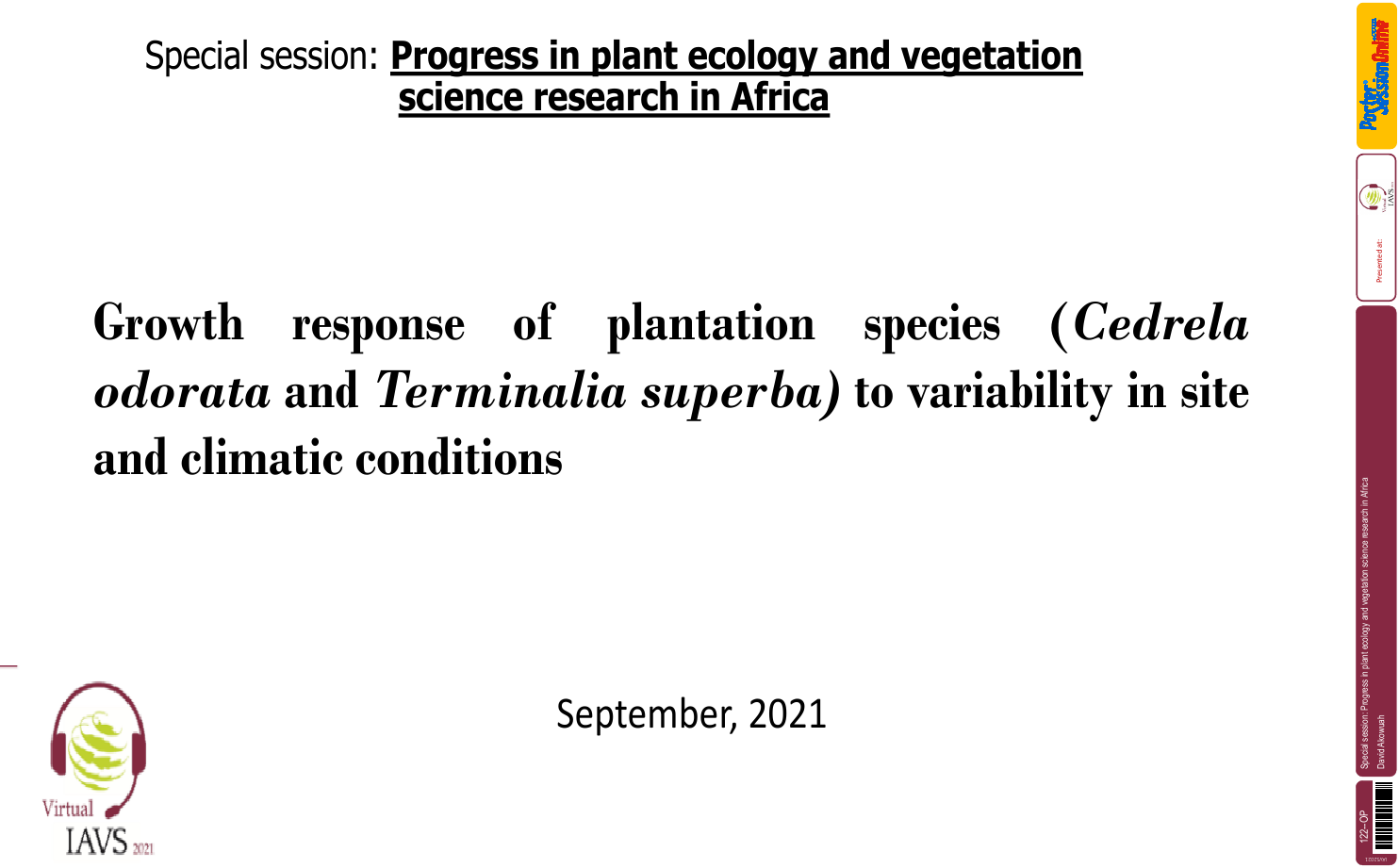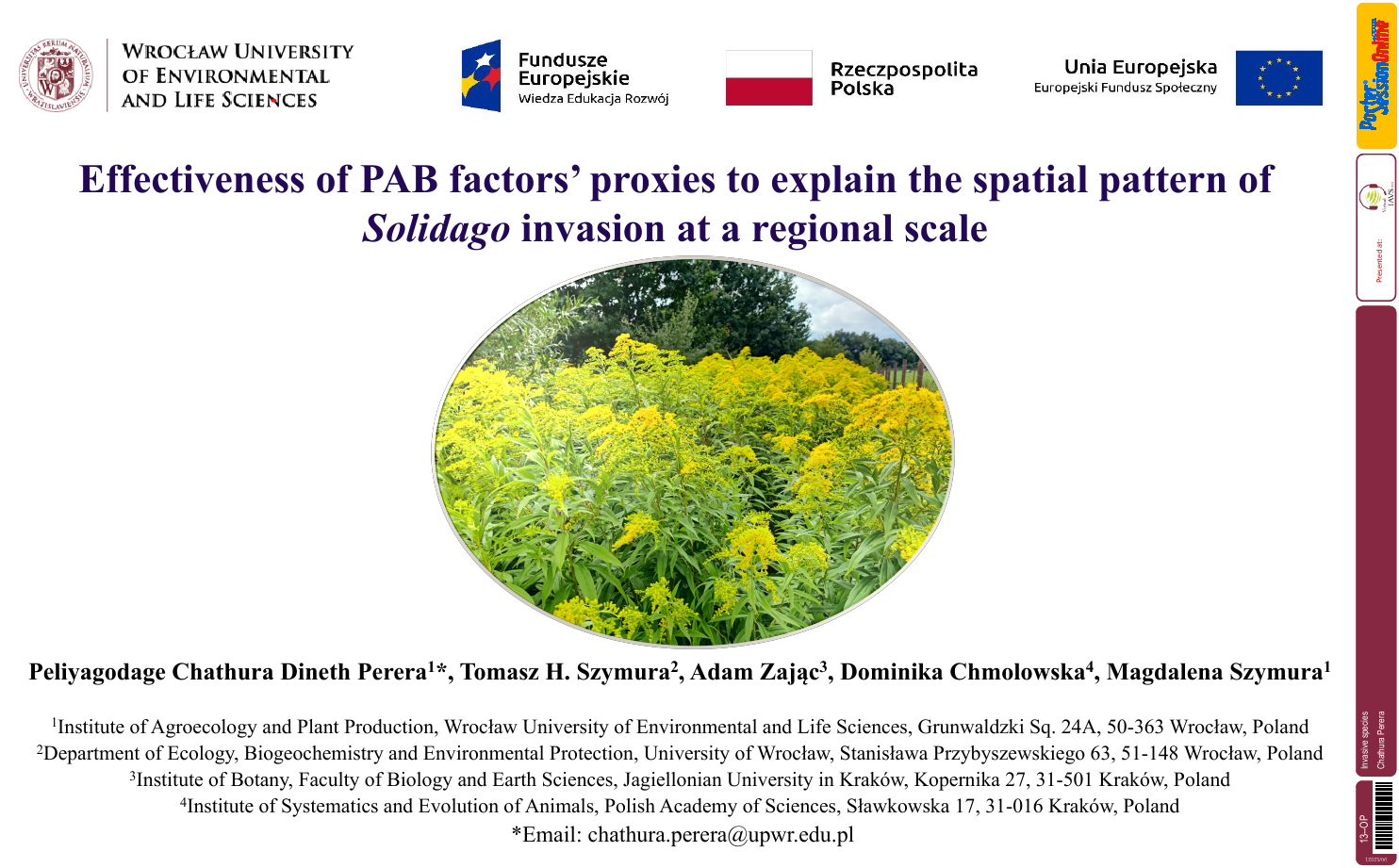| |
 |
|
 | | |
Discussion forum - 63rd IAVS Symposium
 Topic - Invasive species Topic - Invasive species
If you are already registered in PosterSessionOnline, enter your e-mail and click on LOGIN. Otherwise click on REGISTER. |
 |
|
 |  | |
 |
 |
 |

|
Poster: 37
Visits: 37
Title: Patterns and drivers of non-native plant invasions in northern prairie grasslands
Authors: Viktoria Wagner ,
Centre:
|
|
You must be registered to reply or comment.
|
|
PATTERNS AND DRIVERS OF NON-NATIVE PLANT INVASIONS IN NORTHERN PRAIRIE GRASSLANDS
|
 |  | Viktoria Wagner |
Thread initiator
Subspeciality
Reg: 9/20/2021 11:33:00 AM
|
 |
Comment# 1
|
I invite colleagues to open debate around the issues raised in my presentation, both those relating to research and to practice.
Comment added on 9/20/2021 11:33:00 AM
|
|
|
 |
| |
 |
|
 |  | Dariia Shyriaieva |
Reg: 9/8/2021 5:49:00 PM
|
 |
Comment# 2
|
Dear Viktoria,
Thank you for such an interesting presentation of your lab's research, as well as for general information about the prairies of North America, their ecology and stage - the last one is especially interesting for those who work in the steppe biome in Eurasia.
I really liked the index you introduced to measure agricultural activity - could you please tell me if this one is published somewhere by other authors or is it the first time you used it?
The results are also interesting to me with these top-3 most abundant grasses. Among the most successful invasive species in dry grasslands of Eastern Europe, there are practically no graminoids, mainly various herbs. From your presentation, I see the reason for this - that graminoids from Eurasia are widely used for agriculture in North America, while in Europe we do not have such crops from North America. Also, regarding the grass species, I would like to ask your opinion on the grass Poa pratensis subsp. angustifolia - recently I have heard and seen several times that some authors are considering the possibility of natural distribution of this species in remote regions of North America. What is your point of view about this issue?
Thank you again for the presentation and looking forward to see further results of your work!
Dariia.
Comment added on 9/24/2021 3:42:00 PM
|
|
|
 |
| |
 |
|
 |  | Viktoria Wagner |
Thread initiator
Subspeciality
Reg: 9/20/2021 11:33:00 AM
|
 |
Comment# 3
|
Hi Dariia,
Thanks for visiting my talk! Zoey used agricultural activity data from the ABMI, as part of their human footprint map:
https://abmi.ca/home/reports/2018/human-footprint/details.html?id=1A
What are the most common invasive non-natives species in dry grasslands of the Ukraine?
The subspecies question for Poa pratensis is an intersting one and I did not explore in the talk. To the extent that we understand today, there is a related, native subspecies (Poa pratensis subsp. agassizensis) in the province. Its ecology is not well know and its genetic differentiation from subsp. angustifolia needs to be looked into. We collected Poa pratensis in all our plots and found that the native subspecies was very rare. I also expected it to be found further north but it popped up in the southern prairie. There needs to be some work done on the genetics and in the herbarium to understand its distribution.
I enjoyed your talk on remote sensing of EUNIS habitat types in SW Ukraine! Are you working on a remote sensing topic at Masaryk U?
Comment added on 9/25/2021 2:17:00 AM
|
|
|
 |
| |
 |
|
 |  | Dariia Shyriaieva |
Reg: 9/8/2021 5:49:00 PM
|
 |
Comment# 4
|
Dear Viktoria,
Sorry, I didn't notice the comment in time. Thank you for sharing your experience and opinion about Poa pratensis/angustifolia, that is not so simple with it, but interesting!
Speaking about the most common invasive species in the dry grasslands of Ukraine, different regions can be distinguished. In the forest-steppe zone (typical meadow steppes), the most serious problem is Asclepias syriaca. This species was used (and in some places is still used) as a melliferous plant, and over the past decades, it has very actively spread to natural communities, even undisturbed ones. In Southern Ukraine (steppe zone and zonal steppe vegetation), I can highlight Grindelia squarrosa, it spreads mainly in the presence of disturbance factors, so the pastures are full of it. Tree and shrub invasive species (such as Robinia pseudoacacia, Elaeagnus angustifolia, Ailanthus altissima, Gleditsia triacanthos) are also actively spreading into steppe communities from the artificial forest plantations.
Thank you for your attention to our presentation! This topic (remote sensing) is not my main project, I was doing it before my arrival to the Czech Republic, as an additional project. At Masaryk University, I work now with my dataset on the dry grasslands of the Southern Bug river valley (SW Ukraine), their classification and biodiversity, for my PhD study.
Best wishes, Dariia.
Comment added on 10/11/2021 3:40:00 PM
|
|
|
 |
| |
 |
|
|
 |
 |
 |
| You must be registered to reply or comment. |
|
 |
 |
 |
 |
 |
| Most viewed poster for this congress |
 |

|
Poster: 122
Visits: 528
Title: Growth response of plantation species (Cedrela odorata and Terminalia superba) to variability in site and climatic conditions
Authors: David Akowuah , Reginald T. GuurohMark Appiah2
Centre:
|
|
 |
 |
 |
 |
 |
| Poster most viewed in this topic |
 |

|
Poster: 13
Visits: 195
Title: Effectiveness of PAB factors proxies to explain the spatial pattern of Solidago invasion at a regional scale
Authors: Chathura Perera ,
Centre:
|
|
|
|